|
Impatiens psittacina Hook.f.
Known on the Internet as The Rare Thailand Parrot Flower
This rare plant is not an orchid species. The search for the Rare Parrot Flower from Thailand, Burma and portions of east India
This is how the e-mail story of one of Nature's Rarest plants was tracked down.
The original 1901 botanical documents are included.
Impatiens psittacina Hook.f.
Known on the Internet as The Rare Thailand Parrot Flower
Known to the people of Thailand as "Dork Nok Khaew" Sometimes incorrectly spelled Impatiens psitticana, Impatiens psitticina, Impatiens psitticine After you read this article, if you are still in doubt as to the validity of this species, read Ray Morgan's magazine article:
http://www.rhs.org.uk/NR/rdonlyres/F.../impatiens.pdf Many people mistakenly believe Impatiens psittacina is an orchid, it is not. Instead it is one of the rarest members of the genus Impatiens in the world. This is the story of how we learned about the species.
In late April of 2006 I received an email from my friend Robert Black with 5 photos attached. The photos were entitled the "Rare Thailand Parrot Flower". I'm certain many now reading this also received a similar email. That email is currently on its third or fourth trip around the world since early 2006. When the photos of
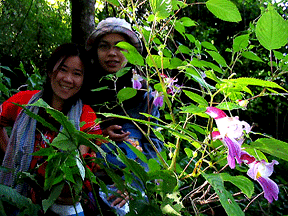 the Parrot Flower from Thailand first appeared on the internet I began to receive copy after copy via email. That was likely because this website features rare plants and most people wanted to buy the plant! I sell few plants. I collect plants. Since I'm a collector I began almost immediately researching the plant and hit dead end after dead end. the Parrot Flower from Thailand first appeared on the internet I began to receive copy after copy via email. That was likely because this website features rare plants and most people wanted to buy the plant! I sell few plants. I collect plants. Since I'm a collector I began almost immediately researching the plant and hit dead end after dead end. Many who write wrongly claim the flower is an orchid. I knew that to be wrong since orchids all have three petals and three sepals. This was obviously something else. But what? The search was filled with barricades since the supposed scientific name was incorrectly spelled on the internet. The name that was circulating on some plant talk sites was "Impatiens psitticana" and still others were spelling it "Impatiens psitticina". Numerous other incorrect spellings are also apparently in use. Close, but none was correct, and as a result, those bad spellings do not show up on any scientific site. But the name Impatiens psittacina can be found in many scientific source books.
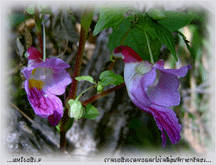 I began in approximately March, 1006 to send emails to the government of Thailand and was directed to the Plants of Thailand Research Unit. At first I was told they never heard of such a plant, but finally, after numerous requests, was told it was a rare species from the north of Thailand and Thai law made it illegal to own, collect, or export plants or seeds. No other information was provided. From there I began to contact plant nurseries in the country for any information and got the same response. A friend who has contacts in Thailand asked one of his associates to check on the plant. Same story. It was supposedly rare and illegal to possess or export. A few Thai growers were obviously unhappy with my request for information having apparently been flooded with requests for the plant. It appeared as though any information from Thailand would not be easy to find. I began in approximately March, 1006 to send emails to the government of Thailand and was directed to the Plants of Thailand Research Unit. At first I was told they never heard of such a plant, but finally, after numerous requests, was told it was a rare species from the north of Thailand and Thai law made it illegal to own, collect, or export plants or seeds. No other information was provided. From there I began to contact plant nurseries in the country for any information and got the same response. A friend who has contacts in Thailand asked one of his associates to check on the plant. Same story. It was supposedly rare and illegal to possess or export. A few Thai growers were obviously unhappy with my request for information having apparently been flooded with requests for the plant. It appeared as though any information from Thailand would not be easy to find. I then began trying to locate rare impatiens growers in this country and in Europe. I managed to find several and contacted every one I could reach. None had ever seen the plant! Many who had seen the photos thought the entire story was a hoax. Then I received an email from an individual associated with a major seed supplier. That individual was certain this whole thing was a hoax and encouraged me to drop my search. He felt I was just wasting my time and any plan to post anything about the "species" on this website would be foolish. He also seemed to feel the photos were created on a home computer.
As a retired commercial photographer I'm trained in the use of PhotoShop and have used the program professionally for many years. I formerly owned a company that created photography and computer graphics for large hotels, government tourist agencies, clothing manufacturers, cruise lines and others. We've put together some "impossible" images by combining numerous photographs to create a single photo story. Composite photos are "faked" all the time and I would guess many now reading this have seen the "photo of the year" of a shark jumping out of the water attacking a helicopter. It is a fake! Just look it up on the National Geographic website. But these did not appear to be composite images so I began to closely examine the photos of the Parrot Flower for traces of the signs that often accompany PhotoShop retouched photographs. None could be seen other than the edges of the photos were "feathered" which is often done in PhotoShop. The creator was at least familiar with photo retouching programs. But was it possible these were compositied on a home computer?
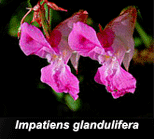 I then ran across a mention of Impatiens glandulifera. Some people on the University of British Colombia (UBC) plant discussion site felt the "rare parrot flower" was actually that invasive species which is common in Canada and some states in the United States. That flower actually looked a great deal like the "tail feathers" of the "Rare Thailand Parrot Flower" but bore no other resemblance. So I became a bit suspicious. Perhaps some very talented PhotoShop "genius" had actually created the parrot flower by combining several flower photographs. Then, when I finally found the correct spelling, Impatiens psittacina, on the International Plant Names Index (IPNI) the information on that botanical site indicated the plant was from India instead of Thailand! That really made me suspicious. If the plant was real, could someone have used that name to forge an imposter that looked like a parrot? It was beginning to appear someone may have used the scientific name and dreamed up the "Rare Thailand Parrot Flower"! I then ran across a mention of Impatiens glandulifera. Some people on the University of British Colombia (UBC) plant discussion site felt the "rare parrot flower" was actually that invasive species which is common in Canada and some states in the United States. That flower actually looked a great deal like the "tail feathers" of the "Rare Thailand Parrot Flower" but bore no other resemblance. So I became a bit suspicious. Perhaps some very talented PhotoShop "genius" had actually created the parrot flower by combining several flower photographs. Then, when I finally found the correct spelling, Impatiens psittacina, on the International Plant Names Index (IPNI) the information on that botanical site indicated the plant was from India instead of Thailand! That really made me suspicious. If the plant was real, could someone have used that name to forge an imposter that looked like a parrot? It was beginning to appear someone may have used the scientific name and dreamed up the "Rare Thailand Parrot Flower"! I tried with no success to find botanical photos of the actual plant with that scientific name. I contacted the Royal Botanic Garden Kew in England and several gardens in India. None had the photo on file, or if they did, were not willing to share it with the public. So, for at least awhile, I began to believe the entire story could potentially be a hoax. The more I researched the more I began to believe this "plant" was simply a fake PhotoShop composite creation.
I became so deluded with the idea it was fake I actually posted a note on one of the garden talk sites saying I was certain it was a fake! Then I went so far as to create my own "Parrot Flower" in PhotoShop using Impatiens glandulifera as the base. But there was still a doubt. There were at least 5 photographs on the internet from 5 different angles. Someone would have had to spend days if not weeks creating all those angles and still make them all look real! That would take both great talent and a ton of time. Creating quality composites is an art. Not something anyone with $900 to spend on a copy of PhotoShop can easily create.
Finally I began to receive emails from rare aroid expert Julius Boos in Florida. Julius knows his plants, especially aroids. We have exchanged many emails regarding aroids (a specialized group of plants) I was researching for this website. Julius was convinced the "Rare Thailand Parrot Flower" existed. And for good reason. He had seen it!
I trust Julius' instincts but I was still skeptical. But Julius is a better researcher than I have ever been. I had been trying for months to find the scientific text where the plant was first described botanically with no success. Within days Julius emailed a copy! Even the original botanist described the impatiens as looking like a parrot-like bird as a "cockatoo suspended by a string from its shoulders". The flower existed!
In fact it is a species from several small geographic regions in Asia: northern Thailand, Burma and a neighboring state in India. Some sources claim it is found in Vietnam, the Himalayas and neighboring countries but that cannot be confirm!ed scientifically. The Thai's even have a name for it and call the Impatiens "Dork Nok Khaew". Literally translated that says: Dork or Dok = flower, Nok = bird, and Khaew = green or the word for parrot. So the translation would be Flower Bird Parrot.
Julius' research had located several people who had visited Thailand, met with the photographer who posted the now famous internet photographs and knew a great deal about the rare Impatiens species. Julius had also tracked down an Impatiens expert in the United Kingdom, Ray Morgan, who was The plant was originally published in 1901 in the Curtis Botanical Journal Magazine, Tab 7809. The plant was credited as having been discovered in the Shan States of Upper Burma in 1899 by a British officer named A.H. Hildebrand who was working on a new boundary agreement between Thailand and Burma, then known as Siam. In that publication botanist Joseph Dalton Hooker described the species as resembling a "cockatoo suspended by a string from its shoulders". (You can read Hooker's entire published description below).
Hooker lived from 1817-1911 and is the botanist of record who gave this species its name. The Latin name Hooker chose, "psittacina", fittingly means "parrot like". Hooker examined specimens grown at the Royal Botanical Garden Kew in Britain but did his original work on the plant in India. It is however unclear whether Hooker drew his work from a live specimen or preserved flowers. Hooker mentions in his description plants seen at the Kew in London were grown from wild collected seed furnished by A.H. Hildebrand. The plants in England did not produce seed, possibly due to the lack of natural pollinators or by a lack of understanding at the time as to how Impatiens species can be artificially pollinated. Although unknown for certain, the seed is likely to have a long viability since in 1901 mail was done only by boat, foot and horse. However, some Impatiens experts today appear to doubt the species has a long viability.
Few people realize that nature has a unique method of pollinating species while keeping a strain pure, and pollination is required to produce seeds. Almost all plants produce a unique pheromone. A pheromone is similar to a perfume designed to attract a particular insect or animal to do the work of pollination. And in most cases, that pheromone smells to the male of an insect species like a female ready to mate! That is why there are very few orchid hybrids found in the wild! The male is drawn only to a single species and won't land on any other. If you don't have the correct pollinator, you don't get seeds!
While considering the possible pollinators for this species, Invertebrate Ecologist/Taxonomist D. Christopher Rogers, who studies insects, made this observation, "looking at the plant, and the position of the anthers (arcing over the flower aperture) and the position of the nectar tube (high and down curled), I would guess that a bird or a bat pollinates the plant. It is possible a moth or butterfly with a very long “tongue” does the job, or maybe a wasp, but the size of the flower leads me towards a vertebrate. That being said the next thing to consider is the form and coloration of the flower. It could be a wasp that would come upon a bird in order to capture parasitic flies or heteropterans with which to provision its eggs." Julius Boos tends to believe the pollinator is more likely to be a "large hairy bumble-bee.... with large, wide and hairy heads and bodies, seemingly perfect to collect and distribute pollen." Julius believes that insect "would have tongues more than long enough to reach the pollen source." He continued, "The flower also appears to possess and provides a basal 'petal' as a 'landing platform' for a bee to land and hold on to while feeding!" Although both Christopher and Julius are obviously forced to speculate, due to the lack of documented information, it appears regardless of which of these vertebrate, or invertebrate, species does the natural job in nature it is highly unlikely we have that specific pollinator in North America. As a result, this impatiens species is not easily caused to reproduce in captive growth.
Julius also managed to find information about the Thai grower who posted the now famous photographs on the internet (all with text in the Thai language). A Thai native, he is also an experienced photographer and plant grower. The flower, which resembles a multi-colored flying parrot, has an overall "blue" flower with reds and other accent colors. Sources that preferred to remain unnamed described the flower to another rare impatiens grower as "somewhat difficult" to cultivate. The Thai gentleman also described the Parrot Flower as possibly not being tuberous. The flower is said by the Thai source to be seen in the wild in several color combinations and tuberous plants were not seen in the "blue" colored flower but mainly in the pink and yellow. Even those were reported to be "tricky to grow" in spite of having tubers.
According to an informed source, the plant needs moist humid rain forest conditions. Far wetter than can be found in the majority of North America. An extremely knowledgeable source who is familiar with the plant has recently provided information the plant is known to grow in limestone soil with a pH that is higher than normal. That is likely the explanation for the "blue" coloration due to a botanical phenomenon known as "anthocyanins" (a condition where water soluble pigments appear red to blue) depending on the soil pH. The plant is apparently truly rare in nature and is not the "invasive vine" some on the internet who are not truly familiar with the species have speculated. As for the now famous Thailand Parrot Flower photos, those were taken by the Thai grower of a plant collected in 2001 near Chiang Mai, N. Thailand. But like many flower species, this impatiens has a limited blooming season. The blooming season for Impatiens psittacina in Thailand is October and November. And this impatiens grows tall! Impatiens psittacina Facts:
Size: Plant grows to app. 6 feet (1.8) meters
Leaf : Broad, sharply pointed, to 2 1/2 inches (6 cm)
Flower size: App. 2 inches (5cm) Stem thickness: To 1/2 inch (1.5cm) Bloom season: October/November in Thailand Growing conditions: Tropical, humid, moist
MORE INFO ON PAGE 2 In his scientific description (bottom of this page) Hooker describes the species as being substantially less than one meter tall. That is likely due to the fact he never actually saw the plant in the wild and based his writings on the observations of an untrained individual, Mr. Hildebrand. Unlike the Impatiens you grow in your yard, according to the cover a Thai garden magazine (see info right), this plant grows to almost 6 feet tall (1.8 meters)! The species has a thick 1/2 inch (1.5cm) stem but normal 2 1/2 inch (6cm) leaves. We have no accurate dimensions on the bloom but a photo comparison of the flower to a leaf indicates the flower would be approximately 2 inches (5cm). Hooker's description (below) differs slightly from that when he states the plant is 1.5 to 2 feet tall (less than 60cm). Hooker admits he never actually saw the species in the wild and was basing his description partially on second hand information provided by a non-scientist. This rare plant is not the attractive small Impatiens plant normally sold for landscaping. This Impatiens is tall like a bad weed and apparently will not survive without moist, humid, tropical, rain forest conditions. The flower is beautiful but even if you could keep it alive is not suited for the average front yard garden unless you like weeds, high humidity, and lots of rain! You likely would not like the plant if you found one! (See more photos on page 2.) So why do so many people believe this rare Impatiens species does not exist? It appears even those who are otherwise knowledgeable about Impatiens don't know very much about the very rare species in the genus. I recently ran across a very nice website that sells and specializes in Impatiens. On it, I found this quote: "To begin with, there are approximately 36 species of impatiens in the world". I make no claim to be an Impatiens expert, but based on my limited research just trying to locate Impatiens psittacina, I knew that statement could not be correct! A check of the Missouri Botanical Garden scientific plant name database TROPICOS revealed there are more than 500 Impatiens species in their records. Many quite rare! 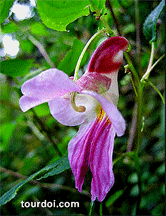 Even more import!ant, if the species does not truly exist, someone needs to explain that to the scientists who compiled the scientific text Flora of India Volume 4 as well as the people of Thailand who have seen it, photographed it, and furnished all the photos on this and the following pages. The species has been well documented in both instances. The information in the box above came from the cover of a Thai gardening magazine! Still, I regularly receive email saying "I don't believe it". Posts on the internet can be found as recently as July, 2007 claiming it is a fake. Even more import!ant, if the species does not truly exist, someone needs to explain that to the scientists who compiled the scientific text Flora of India Volume 4 as well as the people of Thailand who have seen it, photographed it, and furnished all the photos on this and the following pages. The species has been well documented in both instances. The information in the box above came from the cover of a Thai gardening magazine! Still, I regularly receive email saying "I don't believe it". Posts on the internet can be found as recently as July, 2007 claiming it is a fake. I received an email recently from a person who still believes the plant is a PhotoShop workup of Impatiens arguta. There is a fellow in Canada who was spreading the word I personally "pasted" the photos of a "fake" flower into the botanical drawings. I've also received complaints the drawings are not a "perfect match" to the photographs. Linnaean nomenclature, the system in use at the time Hooker wrote his description, was far from perfect. It permitted many species to be described only from preserved or cultivated specimens. There is a possibility, even though Hooker saw the plant in a botanical garden in India, these were drawn more than 100 years ago from dried specimens. It is also highly likely the inks have faded so the colors no longer match. But if you look closely the correct colors are still there!
Until recently, I had been led to believe by plant collectors in India the species did not occur in that country. Dr. John H. Wiersema, Ph.D., Curator of GRIN Taxonomy, (a part of the USDA) recently furnished this information to verify in fact the species can be found in only one portion of that country near the border with Burma, now known as Myanmar. In an email he said, "Our data comes from volume 4 of the Flora of India (P. K. Hajra et al. 1997), which indicates the species to occur in the state of Manipur in Northeast India, as our data also indicate. The state of Manipur borders northern Myanmar, where the plant is acknowledged by you to be native. This is some 400-500 miles removed from Calcutta, which has no import!ance in this context anyway, since Hooker never indicated the plant to be found there, but stated simply "I found no specimen at all resembling it in the Kew Herbarium, or in that of the Herbarium of the Royal Gardens, Calcutta". Hooker had collected in India (with Thomas Thomson) back in 1847-1851, but when he described I. psittacina he was already approaching 85 years of age, and is unlikely to have been to India in the few years previous after the introduction to Kew in 1899 of this species. His comment is in reference to the Herbarium of the Botanical Garden in Calcutta, from which he had the Impatiens specimens on loan for study and verification, not the Botanical Garden itself. In any case, there were no specimens of this species among this loaned material. To sum up, it is perfectly reasonable that the Flora of India is correct in indicating that this Manipur state."
Like most Impatiens the plant is variable. Variations within plant species are quite common! Not all leaves and flowers of the same species are exactly alike. I can show you plants in my atrium where different specimens of the same species don't look exactly alike and have a variety of coloration and growth forms. Botanists and "plant nuts" disagree about those factors all the time which is one reason why so many plants have multiple scientific names, most of them now synonyms (same plant, other name)! Please note the Thai grower (who has a botanical background) stated there are color variations within this species in nature. In September, 2007 I met a Thai family who owns a plant nursery in Bangkok at the International Aroid Show in Miami, FL and simply by chance asked if they were familiar with Impatiens psittacina. Instantly, the entire family said "yes"! And they then confirm!ed the flower was not only common in the "blue" form seen in the photos but also in a pink and yellow version. They were also amused that people in North America believe the flower is a hoax. But if you are still a doubter, look closely at the photos and the drawing below. The curved "beak", which is the backwards pointing nectar tube at the back of the corolla, and "string from the shoulders" are there, just the way Hooker drew and described them over 100 years ago! If created in PhotoShop the person who supposedly fantasized them was not only lucky but also a botanical expert and creative genius.
I've also been accused of fabricating parts of this story because I don't name all my sources. I agreed to withhold identities and will do so until given permission to reveal names. Think about it, if you had this very rare Impatiens in your greenhouse (a very few collectors do) would you want a lot of people climbing over your fence to steal it? I receive email all the time from growers of rare species complaining how many of their plants are regularly stolen by "plant thieves". Seed sellers would pay top dollar for this rare plant so they could attempt to artificially pollinate it or clone the species! And if you didn't know, plant cloning is done every day, just ask your local nursery. It is called "tissue culture".
One last fact to ponder: If someone told you there was a 20 foot tall (6 meter plus) rare plant with a 6 foot (2 meter) group of flowers known to science as an inflorescence that stunk so bad it smelled like a rotting corpse would you doubt it existed? Or if someone told you there was a plant with no stem, no leaves, no roots and a single flower 3 feet wide (1 meter) that can weigh 24 pounds (over 11 kilos) that also looks and smells like dead meat would you doubt that? Many did! Both exist!
The first is known scientifically as Amorphophallus titanum, the "Corpse Flower". Most large botanical institutions now have one as a major exhibit when it blooms. At Fairchild Tropical Garden in Miami it is known as "Mr. Stinky". Thousands of visitors stand in long lines to see one in bloom! The second is also known by the common name of "Corpse Flower" and is known scientifically as Rafflesia arnoldii. So far no institution has learned how to grow one in a collection. That plant is actually a parasite and grows inside a vine. It is only visible when it blooms! Growing in the rain forests of Sumatra and Borneo, the only place in the world where it can be found, R. arnoldii has no leaves and grows inside a vine which is a relative of the grape and is scientifically a Tetrastigma species. Unless you saw evidence of an old blossom, you could walk right past the host vine and never know the world's largest flower lived inside. Both species are rare, just like Impatiens psittacina. But just because you can't buy one easily doesn't mean they are a hoax. The world of plants can truly be bizarre.
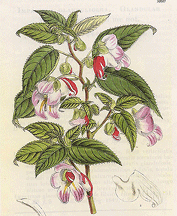 An interesting side note. The friend from South Carolina who had originally sent me the photos called in early 2007 to tell me he and his wife had been to dinner the night before at a local Thai restaurant. He asked the waitress if she had ever seen the Thailand Parrot Flower and was politely told, No. But within minutes the young lady brought another Thai woman to the table who excitedly said, "Yes, from Chiang Mai". Just like the Thai family I met in Miami, she then went on to describe the flower, unprompted, and used her hands to describe how the flower had the "beak" of a parrot and was connected to the plant like it had a string from the shoulders. She knew the flower well, as do many people from north Thailand!
Like Thai food? Try it yourself. Ask your waiter or waitress if they have ever seen "Dork Nok Khaew" near Chiang Mai, North Thailand. You may just be surprised!
The original botanical published work as well as some of the Thai collector's photos (see page 2) are included for you to enjoy. We do not have the plant and we cannot tell you where to buy cuttings, starts or seeds. The very rare plant is not available. Due to the tropical requirements and reported difficulty in maintaining the species it is very unlikely it will ever be a common plant at any nursery! No botanical garden we can locate has one on display other than the Queen Sikrit Botanical Garden in Chiang Mai, Thailand.
For those who want to compare the drawing to the photo I've positioned the "parrot" from the upper right of the drawing beside the "parrot" from the upper left of the photo. Judge for yourself. As for me, I believe! It's simply a scientific fact.
|
출처: Good Life 원문보기 글쓴이: Zrang



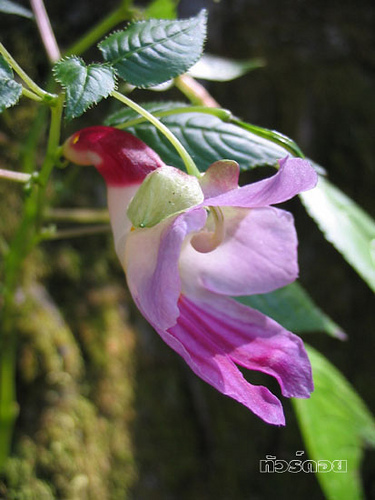
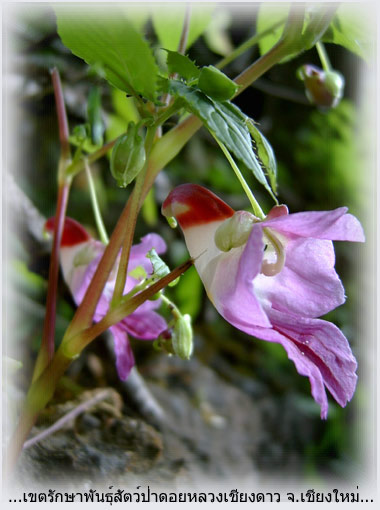
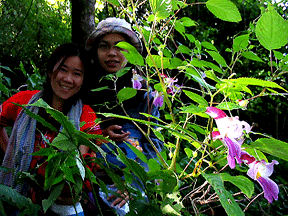
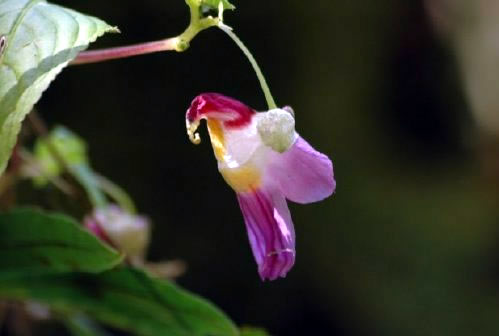
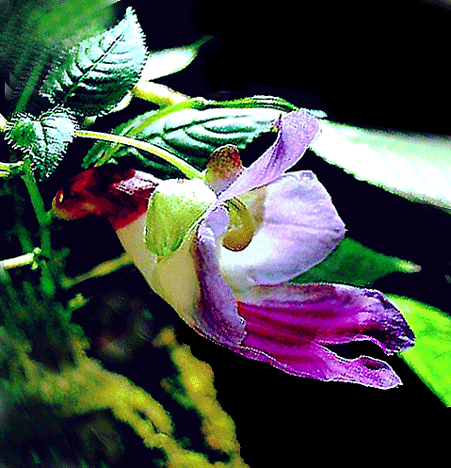
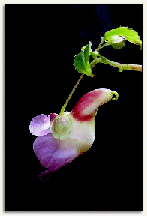 able to furnish the sought after original botanical publication containing the description, a drawing of Impatiens psittacina, and other helpful information. There is a link at the top of this page to an article by Ray which includes information on Impatiens psittacina.
able to furnish the sought after original botanical publication containing the description, a drawing of Impatiens psittacina, and other helpful information. There is a link at the top of this page to an article by Ray which includes information on Impatiens psittacina.
첫댓글 치앙마이 가시는 분 계시면 사진 좀 -_-)ㄴㄴ 참 예쁜 꽃이네요. ^^